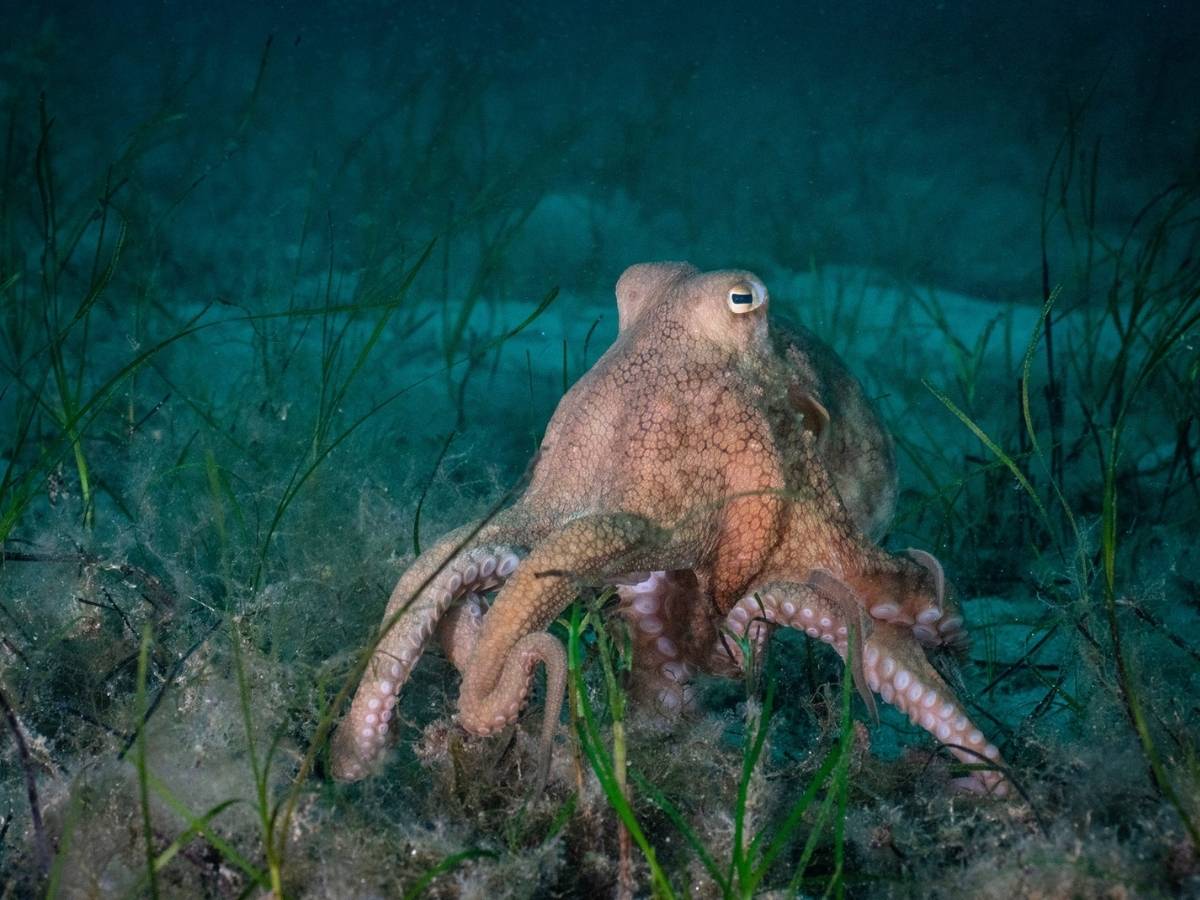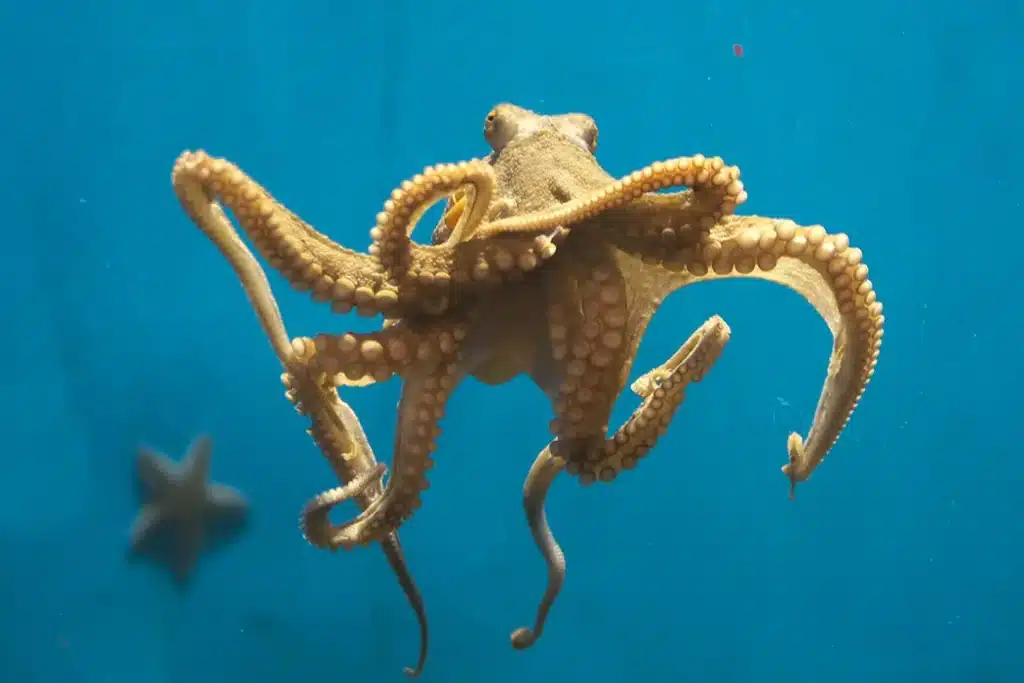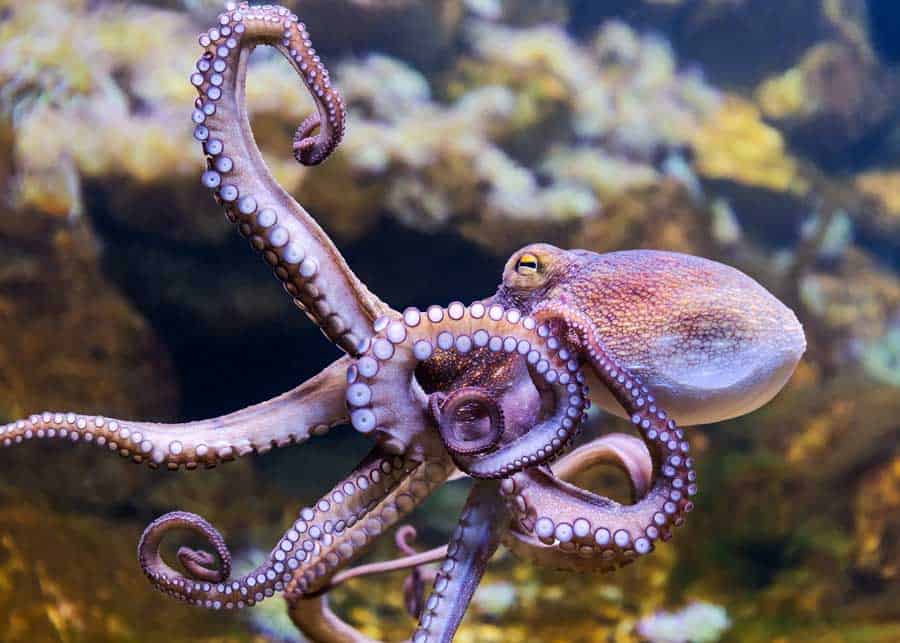What Is The Beak Of An Octopus

Introduction
What Is The Beak Of An Octopus: The beak of an octopus is a fascinating and integral part of its anatomy, representing a remarkable adaptation in the world of marine life. Octopuses, known for their remarkable intelligence and astonishing ability to adapt to their underwater environments, possess a beak that serves as a critical tool for their survival.
Located at the center of their arms, where the arms converge to form the mouth, the octopus beak is a sharp, chitinous structure reminiscent of a parrot’s beak. This unique anatomical feature distinguishes octopuses from other cephalopods and plays a pivotal role in their carnivorous lifestyle.
Octopuses are voracious predators, and their beaks are designed to help them capture and consume a wide variety of prey, including crustaceans, mollusks, and fish. The beak’s robust construction allows it to withstand the considerable force required to break open the hard shells and exoskeletons of their prey.
In this exploration of the octopus beak, we delve into its composition, function, and significance in the octopus’s daily life. We also address common questions about its role in hunting, its potential danger to humans, and its intriguing applications in scientific research and industrial engineering. Understanding the beak of an octopus sheds light on the incredible adaptations that have evolved in the depths of our oceans, showcasing the ingenuity of nature’s design.

What do octopus use their beaks for?
Octopuses use their radula and salivary papillae to drill into or crack open these hard shells(more on that later). Then, they use their beak, like you might use a pair of scissors, cutting apart softer food like fish into bite-sized chunks!
Octopuses are extraordinary creatures, known for their remarkable intelligence and adaptability in the ocean. One of their most distinctive features is their beak, a hard, chitinous structure located at the center of their arms where they converge to form the mouth. This beak serves a variety of critical functions in the octopus’s daily life.
- Prey Capture: Octopuses are carnivorous hunters, and their beaks are essential for catching and consuming their prey. When they encounter a potential meal, such as crustaceans, mollusks, or fish, they use their strong arms to hold the prey in place. The beak then comes into action, allowing the octopus to bite and break open the hard shells, exoskeletons, or tough skin of their prey.
- Feeding: Once the beak has torn apart the prey, the octopus uses its muscular radula, a specialized feeding organ, to scrape and manipulate the flesh into a form that can be ingested.
- Defense: Octopuses can also employ their beaks defensively. If they feel threatened or cornered, they may use their beaks to deliver a painful bite to potential predators or perceived threats.
- Venom Delivery: In some species, the beak is also involved in venom delivery. Octopuses can inject venom into their prey through the beak, immobilizing or incapacitating it before consumption.
The beak of an octopus is a versatile and powerful tool that plays a pivotal role in their survival, enabling them to capture, process, and consume a diverse range of prey in their complex underwater environments.
Can you eat octopus beak?
Cephalopod beaks are made of chitin, a hard substance that is also used in the shells of crabs and shrimp. Your stomach cannot break it down. These beaks are also wickedly sharp.
The beak of an octopus is a hard, sharp, and chitinous structure located at the center of its tentacles. It serves as a powerful tool for the octopus to capture and consume its prey, which often includes crustaceans and other marine creatures with hard shells.
Unlike the rest of the octopus’s body, which can be cooked and consumed in various culinary preparations, the beak is not edible due to its toughness and composition. It is too hard and indigestible for human consumption, and attempting to eat it would likely result in dental damage or digestive problems.
When preparing octopus for consumption, chefs and cooks typically remove the beak along with other inedible parts, such as the eyes and internal organs, to ensure that only the tender and flavorful meat is served to diners. Octopus dishes are enjoyed in many cuisines around the world, with cooking methods ranging from grilling and frying to braising and marinating, but the beak is always discarded to make the meal safe and enjoyable.
What is another name for the octopus beak?
All extant cephalopods have a two-part beak, or rostrum, situated in the buccal mass and surrounded by the muscular head appendages. The dorsal (upper) mandible fits into the ventral (lower) mandible and together they function in a scissor-like fashion. The beak may also be referred to as the mandibles or jaws.
Another name for the octopus beak is the “mandible.” The mandible is a hard, pointed structure located at the center of the octopus’s tentacles. It is made of chitin, a tough, organic material found in the exoskeletons of many marine animals. The mandible serves a crucial role in the octopus’s predatory lifestyle, allowing it to grasp, puncture, and break the shells of its prey, such as crabs and mollusks.
While “beak” is a commonly used term to describe this structure, referring to it as a “mandible” is more precise, as it highlights its anatomical similarity to the jaws of other creatures. Octopuses are incredibly skilled hunters, and their mandibles play a vital part in their ability to catch and consume a wide range of prey items.
In culinary contexts, when preparing octopus for consumption, chefs and cooks typically remove the mandible along with other inedible parts to ensure that only the tender and delicious meat is served. So, whether you call it a beak or a mandible, it remains a distinctive and essential feature of the octopus’s anatomy.
How big is an octopus’s beak?
Between 2.2 and 12.9 millimeters
Octopus beaks are comprised of two parts: An upper beak and a lower beak. These two pieces are connected and held together by a bridge and shoulder structure, according to Ocean Fauna. The upper beak tends to be larger — between 2.2 and 12.9 millimeters — while the lower beak is smaller.
An octopus’s beak varies in size depending on the species and the age of the octopus. On average, an adult octopus’s beak is relatively small, measuring about the size of a thumbnail or a quarter inch (6-8 millimeters) in diameter. However, this measurement can differ among species, with some having slightly larger or smaller beaks.
Despite their modest size, octopus beaks are incredibly strong and sharp. They need to be robust enough to break through the hard shells of the crustaceans and other prey they capture. The beak’s hardness and sharpness come from its composition, which is primarily made of chitin, a tough and resilient material.
It’s important to note that the size of an octopus’s beak in relation to its overall body can be quite small, as octopuses come in various sizes, from just a few inches to several feet in length. So, while the beak itself may be small, it plays a vital role in the octopus’s hunting and feeding strategies, allowing it to access and consume prey that might otherwise be protected by hard shells or armor.
Is octopus a beak bone?
YES, but they aren’t bones! Octopuses have a hard beak, surrounded by muscles called a buccal mass which they use to crush their food. It is primarily made from chitin (lobsters and crab exoskeletons are made of the same thing!), and it’s similar to the cartilage that makes up our fingernails.
Instead, it is a hard, chitinous structure that serves as the equivalent of a mouth or jaws in these remarkable cephalopods. Chitin is a tough, organic material found in the exoskeletons of various arthropods, such as insects and crustaceans.
Unlike vertebrate animals, octopuses do not have bones. They have a soft body that is supported by a hydrostatic skeleton, which relies on the pressure of fluid (mostly water) to maintain their shape and provide support. Octopuses are incredibly flexible and can squeeze through tight spaces, thanks to their lack of a rigid internal skeleton.
The beak is located at the center of the octopus’s tentacles, and it is surrounded by soft tissue. It is a crucial anatomical feature for capturing and consuming prey, as it allows the octopus to exert strong biting forces and manipulate food items.
Why is the octopus’s beak important?
The octopus’s beak is a remarkable and crucial feature of this enigmatic marine creature. Nestled within its soft, gelatinous body, this tiny yet powerful beak serves a multitude of essential functions, making it a remarkable adaptation in the world of underwater survival.
First and foremost, the octopus’s beak is a formidable tool for predation. Octopuses are skilled hunters, and their beaks enable them to crack open the hard shells of crustaceans, mollusks, and other prey items with remarkable precision. This allows them to access the nutrient-rich flesh inside, providing sustenance for their survival and growth.
Additionally, the beak plays a pivotal role in defense. When faced with a threat, an octopus can use its beak to deliver a potent bite, deterring potential predators or adversaries. This defense mechanism can be particularly effective in safeguarding the octopus from larger predators in the oceanic food chain.
Furthermore, the beak contributes to the overall adaptability and versatility of the octopus. Its ability to manipulate and interact with its environment, including opening jars and solving complex puzzles, is greatly influenced by the dexterity and strength of its beak.
The octopus’s beak is vital for its survival, enabling it to feed, defend itself, and navigate its ever-changing underwater world with finesse and skill. This remarkable structure exemplifies the extraordinary nature of the octopus and its ability to thrive in the depths of the ocean.
Where is the octopus’s beak located?
The octopus’s beak, a small yet pivotal part of its anatomy, is situated at a strategic location within its body. Nestled at the center of its complex oral cavity, the beak is essentially the entrance to the octopus’s internal digestive system.
Positioned at the base of the octopus’s arms, the beak is found where all the arms converge, forming the central hub of the creature’s anatomy. This placement allows the octopus to efficiently employ its beak for both predation and defense.
When the octopus captures prey using its long, flexible arms, it skillfully guides the unfortunate victim to its beak, which serves as the primary point of entry into its digestive tract. The beak’s sharp and powerful jaws then come into play, breaking down the prey’s hard exoskeleton or shell, if present, and beginning the process of digestion.
This central location of the beak facilitates its use in self-defense. If the octopus feels threatened or is confronted by a potential adversary, it can quickly deploy its beak to deliver a powerful bite as a last-ditch effort to ward off danger.
In essence, the octopus’s beak, strategically located within its oral cavity, plays a crucial role in the creature’s feeding and survival strategies, making it an indispensable part of its remarkable anatomy.
Are octopus beaks dangerous to humans?
Octopus beaks, while not inherently dangerous to humans in the same way as venomous snakes or sharp-toothed predators, can potentially pose a threat under specific circumstances. Octopuses have a beak designed for breaking open the hard shells of their prey, and it can be quite sharp and powerful.
In most encounters with humans, octopuses will not use their beaks aggressively. However, there have been rare instances where octopuses have bitten or nipped at humans, especially if they feel cornered, threatened, or if they mistake a hand for food. These bites can be painful due to the beak’s sharpness, and there is a risk of infection if the wound is not properly cleaned and treated.
Octopus bites are infrequent and typically occur when humans are handling or provoking these creatures, especially in the wild. When interacting with octopuses, it’s essential to exercise caution and respect their space. Avoid provoking or harassing them, and be mindful of their behavior.
In general, octopuses are not considered a significant threat to humans, and incidents involving their beaks are rare. As with any wild animal, it’s wise to observe them from a respectful distance and approach them with care to minimize the potential for any harm to either party.

Conclusion
The beak of an octopus is a remarkable example of nature’s ingenuity and adaptation. This chitinous structure, positioned at the heart of an octopus’s hunting arsenal, is a testament to the incredible diversity of life in the world’s oceans.
Throughout this exploration, we have learned that the octopus beak is not merely a tool for predation but a key to the octopus’s survival. Its design, resembling that of a parrot’s beak, allows octopuses to access and consume a wide range of prey, giving them a distinct advantage in their underwater world.
Moreover, we have discovered that the study of octopus beaks extends beyond biology and ecology. Scientists and engineers have found inspiration in their structure for designing stronger and more resilient materials for various applications. This interdisciplinary approach highlights the far-reaching impact of marine biology on technology and industry.
While octopus beaks may remain largely hidden from the casual observer, they reveal the intricate beauty of nature’s creations. Their existence reminds us of the countless wonders that await discovery beneath the waves, encouraging us to continue exploring and protecting the fragile ecosystems of our oceans.
In the grand tapestry of life on Earth, the beak of an octopus stands as a testament to the power of evolution, showcasing how organisms can adapt and thrive in even the most challenging environments.



